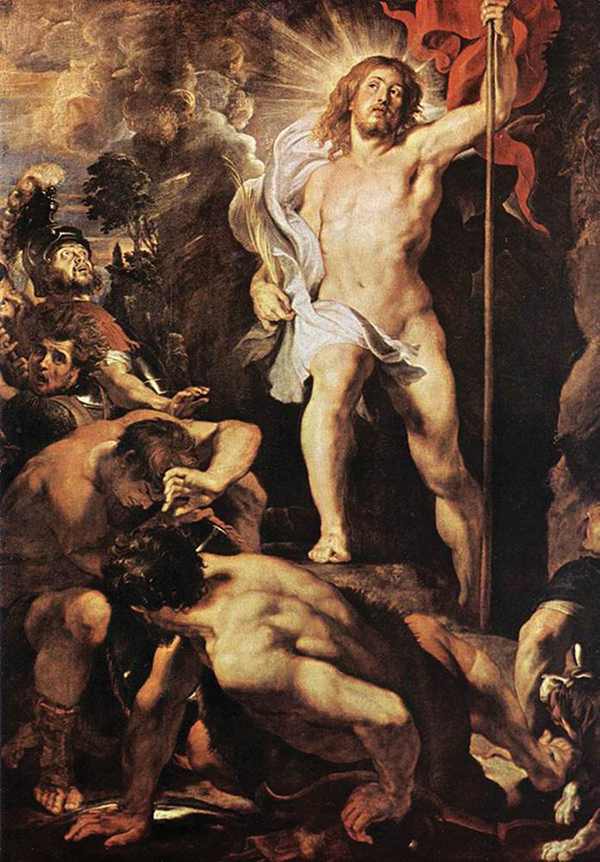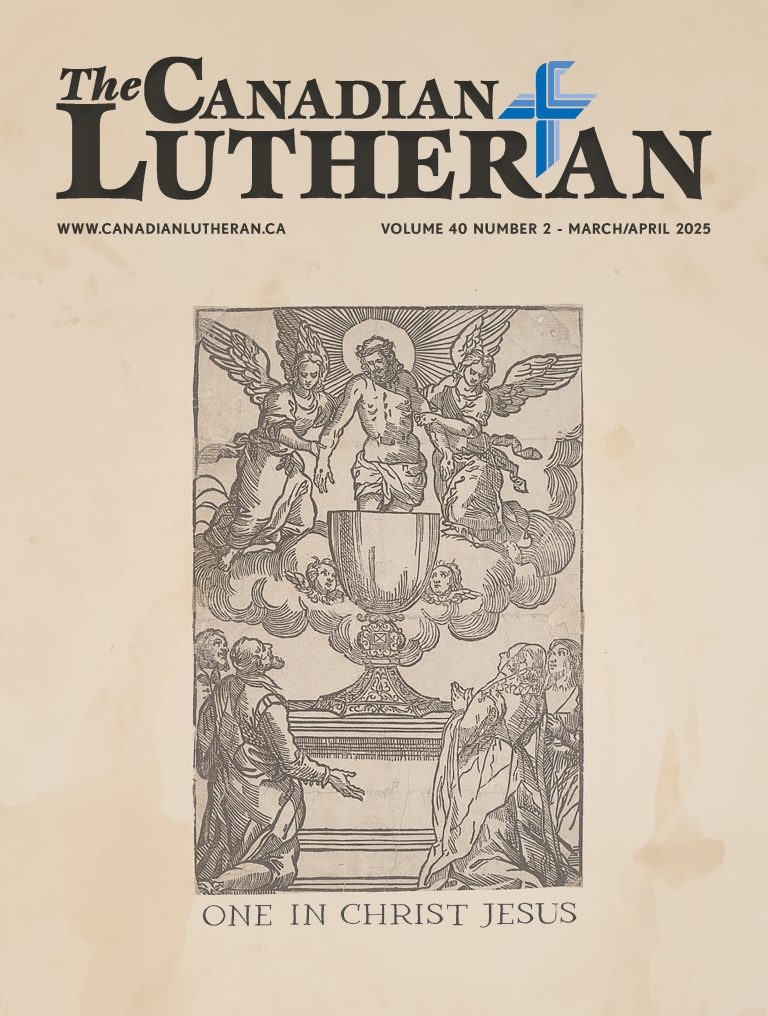Pictures of the Resurrection

Rev. Paul Zabel
by Paul Zabel
So the other disciples told him (Thomas), “We have seen the Lord.” But he said to them, “Unless I see in His hands the mark of the nails, and place my finger into the mark of the nails, and place my hand into His side, I will never believe.” – John 20:25
Christ’s resurrection from the dead is one of the basic beliefs of our Christian faith. Christ returned to life after suffering and dying on the cross for our sins, and remained here on earth until the Ascension. Since no one actually saw His resurrection, Christians have relied on the experiences of the disciples for confirmation that the event took place.
If you were an artist, how would you paint a picture of the Resurrection? Would you paint a picture of an open tomb in an attempt to symbolize our Lord’s triumph over death? Would you depict Christ as being mostly unclothed with only a sheet wrapped around Him, since only a shroud covered Him in the tomb?
As the women were the first ones to appear at the empty tomb, paintings often show the “Noli me tangere” (“Don’t touch me”) encounter between Jesus and Mary Magdalene or sometimes a depiction of all three women at the sepulcher. Paintings from 14th and 15th century Italy often show an apparently weightless figure of Christ floating in the air, perhaps framed by rays of light which give an appearance of the Ascension. The predominant picture of the Resurrection, however, originated in the later Middle Ages and Renaissance, and shows the Saviour firmly on the ground, holding the banner of the Resurrection with its red cross, either standing upright in the open sarcophagus or in the act of stepping out of it.

Ruben’s “Resurrection of Christ” (1611). The soldiers fall back as Jesus steps triumphantly from the tomb.
Following the Council of Trent, which demanded a return to scriptural accuracy, the depiction of an open tomb and that of a floating figure of Christ was replaced with a depiction of Christ standing before a closed tomb. In addition, other paintings of the Resurrection focus on the Roman soldiers who were guarding the sealed tomb. It was Matthew who, alone among the four Gospel writers, mentions in his Gospel account the soldiers that Pilate had put in place at the tomb. This notation seems to have been brought forward by the evangelist to refute the charge made in his day that the disciples secretly removed or stole our Lord’s body from the tomb. Another picture of the Resurrection that highlights the glory of our Lord Jesus’ Resurrection depicts the Roman soldiers resting or lying down around the tomb, either in attitudes of sleep, or awake and shading their eyes from the dazzling light that surrounds Christ.
What is so significant about any depiction of our Lord’s Resurrection? Perhaps we can best summarize it by recalling the event that took place on Easter Sunday evening. You will recall that by this time some of the disciples had already seen Christ’s empty tomb. In the Upper Room on Easter Sunday night, Thomas was being told by the other disciples that they had not only seen the empty tomb, but that they had also seen the Christ, once dead but now living, who had occupied the empty tomb. Joyfully and with gladness of heart these disciples expressed their faith saying, “We have seen the Lord!”
My point is this: our Resurrection scene need not be limited to an artist’s conception, because Christ has revealed Himself to us very personally in His Word and Sacraments. Through the power of the Holy Spirit in these Means of Grace, we receive into our hearts by faith all that our Lord and Saviour has done for us in His suffering, dying, and rising again. Our Lord’s empty tomb fills our emptiness with the fullness of His grace and peace. That grace and peace that has been given to us—we also want others to be blessed with as well.
Our Resurrection scene need not be limited to an artist’s conception, because Christ has revealed Himself to us very personally in His Word and Sacraments.
I am content! My Jesus ever lives,
In whom my heart is pleased.
He has fulfilled the law of God for me,
God’s wrath He has appeased.
Since He in death could perish never,
I also shall not die forever.
I am content! I am content!
(LSB 468, stanza 1)
———————
Rev. Paul Zabel is President of the East District of Lutheran Church–Canada.




